For those who want a quieter mechanical keyboard, O-rings are the simple yet effective solution. These small rubber rings, placed beneath keycaps, absorb the impact of keystrokes, reducing noise without compromising typing feel.
The material, thickness, and hardness of O-rings influence their performance, with options like soft silicone for superior dampening or durable nitrile for long-lasting use. Choosing the right O-rings can transform your typing experience, especially in shared or quiet environments.
Ready to create a more peaceful workspace? Let’s explore how O-rings work and how to pick the perfect set for your keyboard.
What are O-rings?

O-rings, those unassuming little rubber rings, can make a world of difference in your typing experience. These unobtrusive components, when strategically placed beneath your mechanical keyboard keycaps, work silently but efficiently to reduce noise levels while you type.
With every keystroke, you squish the O-Ring between the top of the switch housing and its cross-shaped support (most switches have this support). They act as shock absorbers, dampening the sound of key presses and making your mechanical keyboard quieter without compromising on performance.
Role of Mechanical Keyboard O-Rings
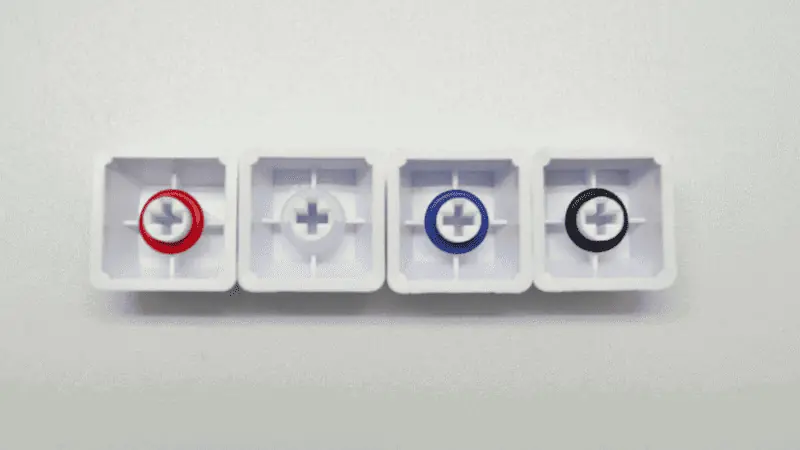
The role of O-rings in mechanical keyboards is straightforward yet impactful. Mechanical switches have a stem that moves up and down, with a spring inside that returns the switch to its resting position. When you press a key on your mechanical keyboard, the keycap makes contact with the thin o ring of the switch beneath it.
This contact generates a sound, often described as a “click” or a “clack,” depending on the key press and the switch type. While some users appreciate the audible feedback of tactile switches and keys, others seek a quieter typing experience, especially in shared workspaces or during late-night sessions.
O-rings serve as a buffer between the material of the keyboard switches. When you press a key, the material of the O-ring absorbs the impact, preventing the keycap from bottoming out on the switch housing. This cushioning effect reduces the noise generated during key presses, resulting in a quieter keyboard.
If you find the O-ring does not reduce the sound enough, you can always stack them on top of each other to improve the sound dampening.
Inquire About Our Silicone and Plastic Products!
Understanding Different O-Ring Materials
Choosing the right O-ring material is critical when your primary goal is silencing your mechanical keyboard. The material significantly influences the reduction of noise produced by the keycaps hitting the switch housing. Different materials will offer varying levels of noise dampening, and understanding these materials is essential for achieving a quieter typing experience.
- Cons: Potential for faster wear due to its softness.
- Other Pros: Offers great heat resistance and good weathering properties.
- Sound Reduction: Silicone’s soft and flexible nature makes it excellent for dampening sound, leading to a quieter bottom-out.
- Sound Reduction: It’s decent at noise reduction, but may not be as effective as silicone due to its slightly harder nature.
- Other Pros: Good resistance to oils and greases, making it a common choice for O-rings in various applications.
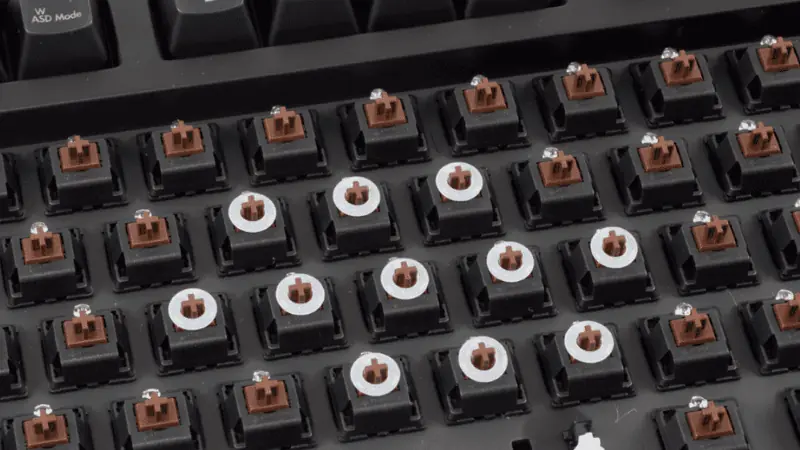
Ethylene Propylene Diene Monomer (EPDM):
- Sound Reduction: Its durable nature can offer a muted bottom-out sound, although not as soft as silicone.
- Other Pros: Superior heat, ozone, and weather resistance.
- Sound Reduction: Its balanced properties can offer moderate sound reduction.
- Other Pros: Durable with a good balance of flexibility and resistance to environmental factors.
- Sound Reduction: While tough and durable, its harder nature might not dampen sound as effectively as silicone.
- Other Pros: Exceptional abrasion resistance, indicating longer lifespan.
Hardness and Thickness: The Key Parameters
The hardness and thickness of O-rings are key parameters to consider when applying thicker O-rings, applying O-rings, and selecting the best ones for your mechanical keyboard. These factors impact the typing feel and sound reduction when choosing the best o-rings for silencing your keyboard.
Hardness Levels
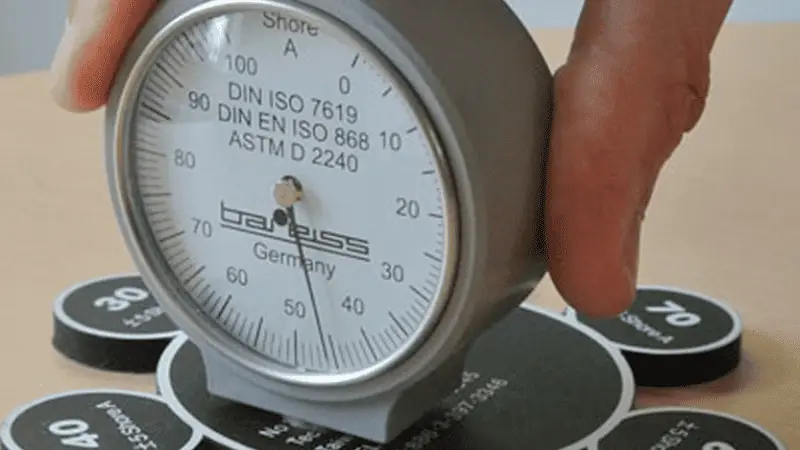
O-rings come in various high hardness factor levels, typically measured on the Shore A scale. Higher hardness levels offer a firmer typing feel and may result in a quieter keyboard. Consider the hardness factor that aligns with your desired typing experience.
Thickness
The thickness of colored O-rings also affects the sound reduction. Thicker, thinner O-rings tend to provide more effective click noise reduction but may alter the keypress feel. Thinner, thinner O-rings, while still reducing noise, offer a typing experience closer to the original keypress.
Inquire About Our Silicone and Plastic Products!
Compatibility: Size Matters
When it comes to selecting O-rings for your mechanical keyboard, one crucial aspect to keep in mind is compatibility. Not all O-rings are universally compatible with every keyboard model.
To ensure a successful installation and effective noise reduction, you need to pay careful attention to the size of the O-rings and how they match your specific keyboard’s keycap stems.
Measure Keycap Stems
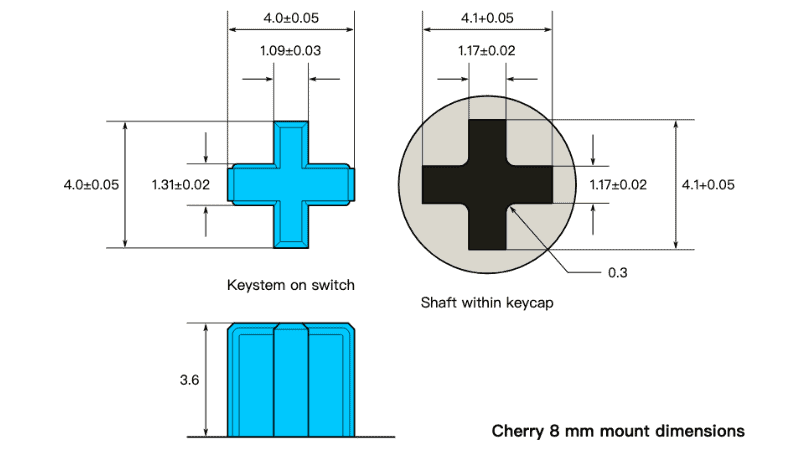
The first step in finding the right O-rings for your keyboard is to measure the stems of your keyboard color keycaps accurately. Keycap stems can vary in size clear color, key color, and shape between different keyboard models and even within the same keyboard if it has different types of switches.
To measure keycap stems effectively, follow these steps:
- Remove a Keycap: Start by gently removing a keycap from your keyboard. It’s advisable to use a keycap puller tool to do this, as it ensures you won’t damage the keycap or the switch beneath it.
- Examine the Stem: Once the keycap is removed, closely examine the stem that connects the keycap to the switch. You’ll want to measure both the width and the thickness of the stem accurately.
- Record the Measurements: Use a caliper or a ruler with precise markings to measure the stem’s width and thickness in millimeters. Note down these measurements for reference when selecting O-rings.
Select the Right O-Ring Size
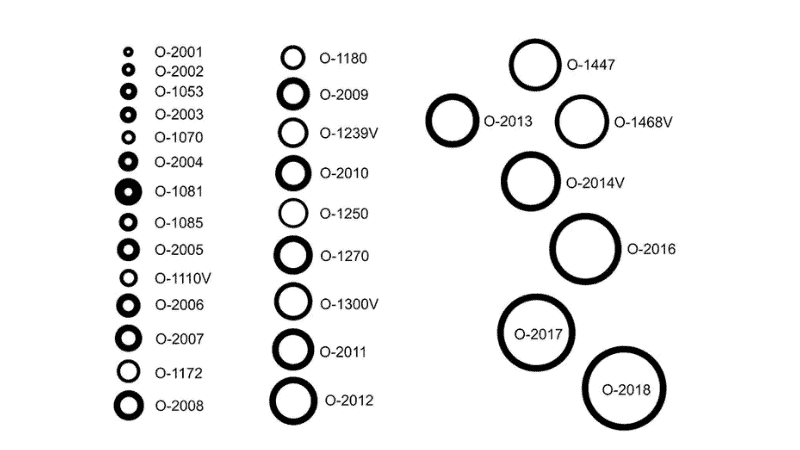
With your keycap stem measurements in hand, you can now choose the appropriate O-ring size. O-rings come in various sizes to accommodate the diversity of keycap stems found in mechanical keyboards.
When selecting O-rings, consider the following guidelines:
- Match Stem Size: Choose O-rings that closely match the dimensions of your keycap stems. Using O-rings that are too small or too large can result in installation difficulties and may not provide the desired noise reduction.
- Check Compatibility: Some O-ring manufacturers provide compatibility charts or guides that list keyboard models and the corresponding O-ring sizes recommended for them. Checking these resources can be immensely helpful in ensuring a perfect fit.
- Experiment if Needed: If you’re unsure about the exact size, it’s a good practice to purchase a small variety pack of O-rings with different sizes. This allows you to experiment and find the O-ring size that fits your keyboard’s keycap stems snugly.
By taking these steps to measure your keycap stems accurately and select the right O-ring size, you’ll not only ensure a successful installation but also optimize the noise reduction capabilities of your mechanical keyboard. It’s a small but essential detail that can make a significant difference in your typing experience.
Inquire About Our Silicone and Plastic Products!
Common Mistakes to Avoid

While O-rings are a simple and effective solution for keyboard noise reduction, there are some common mistakes to avoid during the installation install o rings, and conclusion o rings selection choose o rings process:
- Choosing the Wrong Size: Selecting O-rings that don’t match your keycap stems can lead to installation difficulties and reduced effectiveness in noise reduction.
- Installing O-Rings Incorrectly: Proper installation is essential. Ensure the O-rings sit snugly beneath the keycaps to achieve the desired top noise level and reduction.
- Expecting Silent Typing: While O-rings and switches significantly reduce noise, they won’t make the keys on your mechanical keyboard completely silent. Some noise is inherent to mechanical switches, especially loud, clicky switches like Cherry MX Blue.
Do O-Rings Make Your Mechanical Keyboard Quieter?
The big question remains: Do O-rings truly make your mechanical keyboard quieter? The answer is yes but with a caveat. O-rings effectively reduce the noise generated when the keycaps hit the switch housing, providing a noticeable reduction in sound levels.
However, O-rings are a great choice for decreasing the sound from your keyboard, although the level of dampening will depend on the switch. The speed switch extent of noise reduction may vary depending on factors such as the O-ring material, hardness of the O-ring used, and thickness of the O-ring.
In essence, O-rings strike a perfect balance for a quiet keyboard, between maintaining tactile feedback and reducing typing noise. They make a significant difference in the sound reduction, creating a quieter keyboard without compromising typing speed or feel.
Inquire About Our Silicone and Plastic Products!
Conclusion
In conclusion, thin, softer O rings are a simple yet powerful solution for making your mechanical keyboard quieter in a business setting. Whether you opt for thinner or thicker o rings alone, the softness of silicone O-rings, or the durability of rubber O-rings, the result is a quieter, more efficient workspace where productivity and professionalism thrive.
By carefully selecting the best O-rings for your business, installing them correctly, and considering the preferences of your employees, you can create a tailored typing experience that enhances productivity, maintains professionalism, and ensures the longevity of your mechanical keyboards.
The Best O Rings For Silencing Your Keyboard Await You!
Discover the perfect solution for your business with Hongju, a leader in innovative technologies and services. Whether you’re a startup or an established enterprise, Hongju offers tailored solutions designed to streamline operations, enhance productivity, and drive growth.
Perfect for B2B and wholesale needs, our technology simplifies processes, reduces expenses, and fuels growth. Explore our products and blog for more information.
Want to take your business to the next level? Reach out today for a tailored consultation or demo—let’s shape a brighter future together!